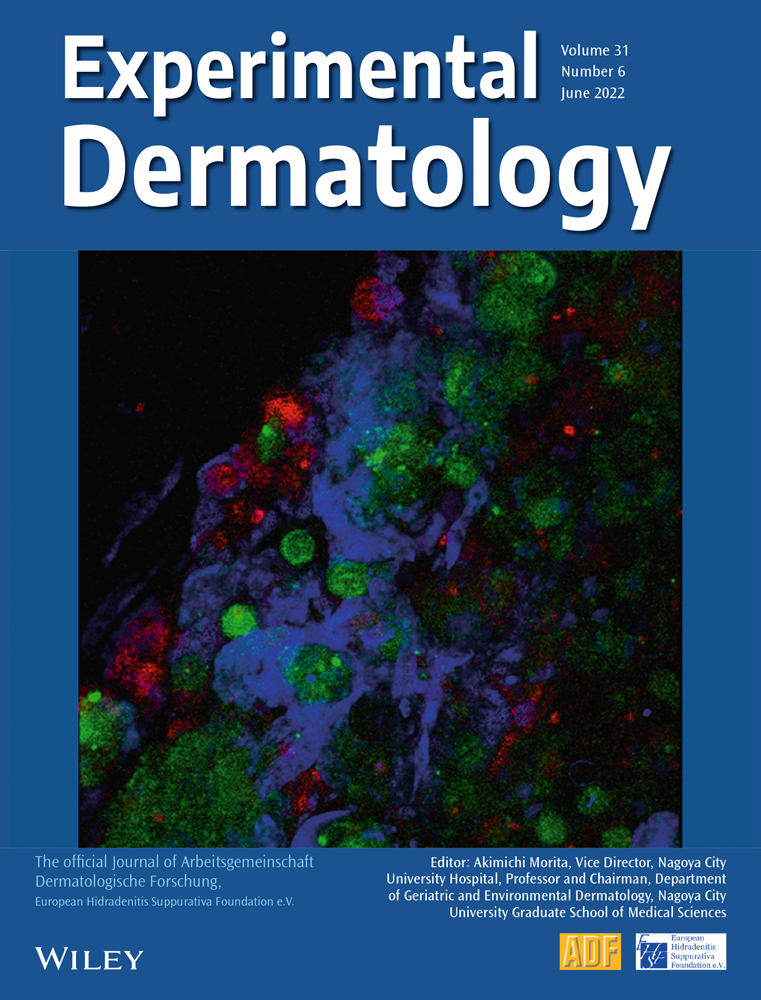Irradiation with 590-nm yellow light-emitting diode light attenuates oxidative stress and modulates UVB-induced change of dermal fibroblasts
Funding information
This study was financially supported by CG Bio Co. Ltd., Seoul, Korea
Abstract
Recently, light-emitting diode (LED)-based devices have emerged as effective and safe tools for the treatment of photoaged skin. However, few studies have been conducted to elucidate the underlying mechanism behind the effect on photoageing of LED light. In this study, we induced photoageing of human dermal fibroblasts (HDFs) with Ultraviolet B (UVB) irradiation and evaluated the ability of 590-nm LED radiation to induce recovery from oxidative stress, restore collagen formation and regulate inflammatory changes. Photoageing was induced in cultured human dermal fibroblasts (HDFs) using UVB irradiation of 50 mJ/cm2. Then, the photoaged HDFs were irradiated with LED using a custom-built 590-nm LED device which emits light with an intensity of 38 mW/cm2 (irradiated for 900 s with 34.2 J/cm2 of total energy). LED irradiation significantly attenuated UVB-induced reactive oxygen species generation and UVB-induced phosphorylation of JNK, c-Fos and c-Jun. In addition, the procollagen levels were recovered significantly, and MMP-9 levels were significantly suppressed after LED irradiation. The UVB-induced phosphorylation levels of NF-κB and pro-inflammatory enzyme COX-2 also significantly decreased. Our results suggest that 590-nm yellow light irradiation may be an effective and safe anti-oxidative and anti-inflammatory treatment modality for photoaged skin.
CONFLICT OF INTEREST
Kui Young Park has served as an advisor for CG Bio Co. Ltd. Hyun-Seung Ryu is the CEO and Hyun-wook Kim and Ji Hyun Youn are researchers at CG Bio Co. Ltd.
Open Research
DATA AVAILABILITY STATEMENT
The data that support the findings of this study are available from the corresponding author upon reasonable request.




